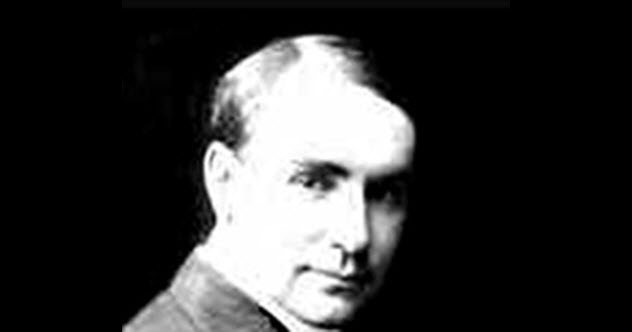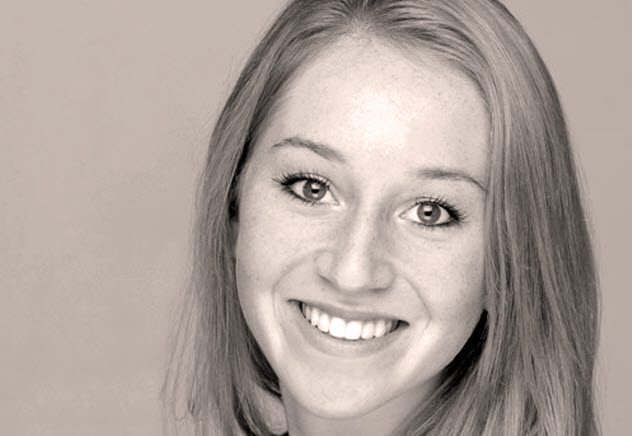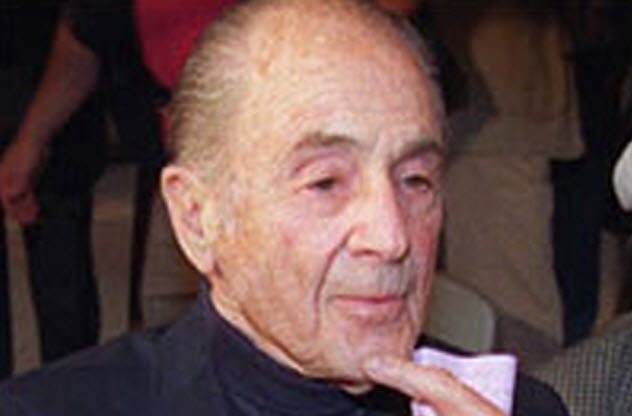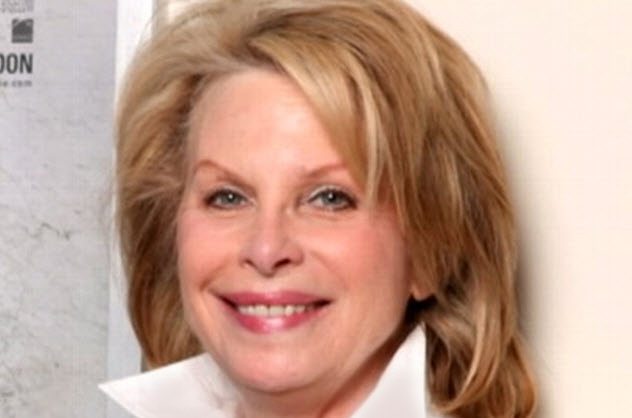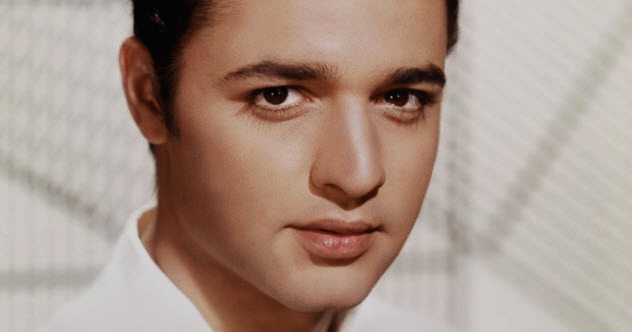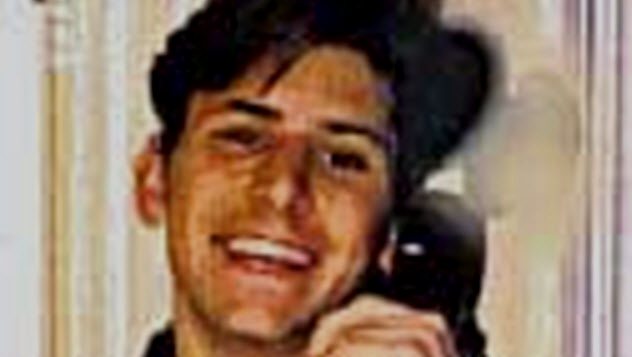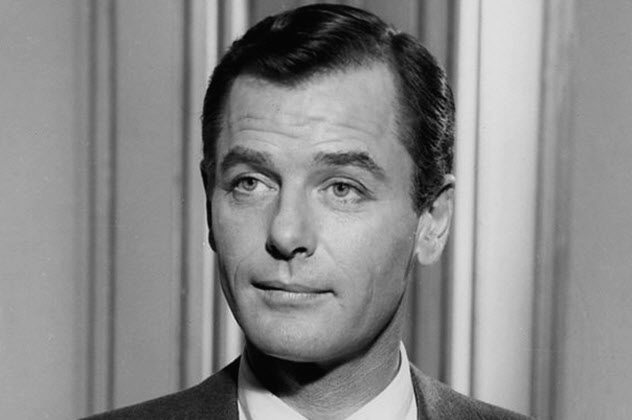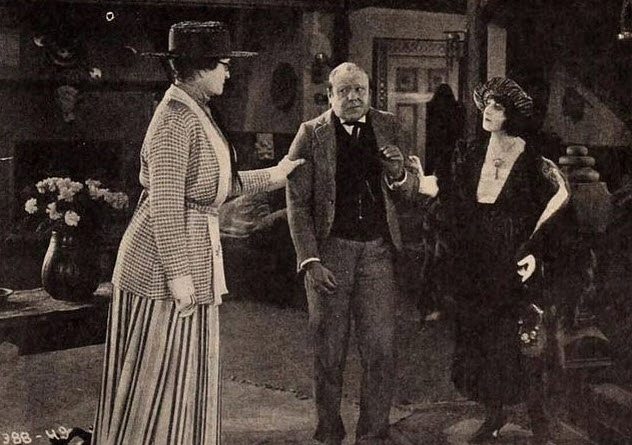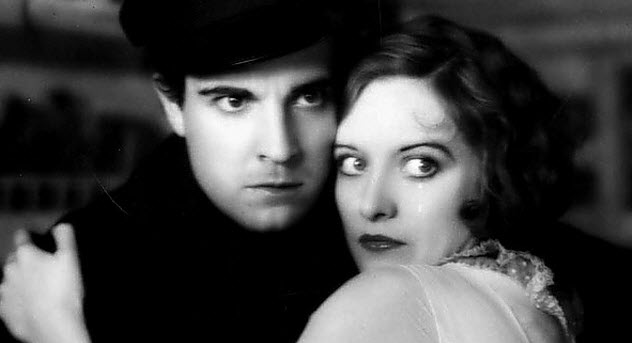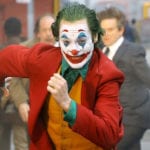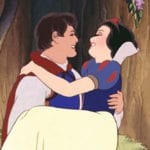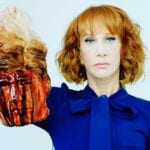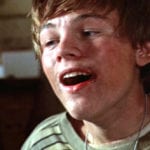Curiously, the sex, drugs, and murder only serve to entice the public even more. Of course, it’s not about charm and beauty this time but rather the same kind of morbid fascination that makes you look at an accident while you’re driving by. More than a few people came to Hollywood hoping to strike it big but never got their “happily ever after.”
10 Francis Boggs
At the start of the 20th century, pioneering director Francis Boggs began his career by working for the Selig Polyscope Company. Although based in Chicago, Boggs traveled to Los Angeles to film certain scenes due to the city’s climate and beach. In 1909, Selig Polyscope set up a satellite base of operations on the West Coast, thus becoming the first permanent film studio in Los Angeles. This was in Edendale, however, not Hollywood. The first genuine Hollywood studio was the Nestor Film Company. It opened on October 27, 1911, which, coincidentally, was the same day that Francis Boggs was murdered. The director was on set rehearsing a scene when the studio’s janitor, Frank Minnimatsu, shot him to death.[1] The studio’s owner, William Selig, was also shot in the arm while trying to wrestle the gun away from the custodian, but Selig survived his injuries. According to the media of the time, the motive for the crime was either a grudge that Minnimatsu held against Boggs or mental instability. In custody, Minnimatsu said that he had been waiting to kill Boggs for six months because he was a “bad man.”
9 Jennifer Stahl
Perhaps there is no Hollywood sob story more common than that of the small-town girl hoping to become a star. Her big break never comes, though, and she is left only with broken dreams and visions of “what could have been.” In the late ’80s, Jennifer Stahl was one of those girls. Born in the hamlet of Titusville, New Jersey, she trained as a dancer and came to Hollywood to make it big. Her career took an upswing in 1986 when she landed a role as a background dancer in the smash hit Dirty Dancing. Several bit parts followed, but that was about the extent of her profile in the industry. By 2001, Stahl had switched from dancing to music and had a small recording studio in her apartment. She was also selling weed to supplement her income. On one fateful day, she was at home enjoying the company of three friends plus a stylist who was there to give her a quick trim. Two men climbed the stairs and knocked on the door. Identifying one of the pair as “Sean,” Stahl let them in and asked what they were doing there. When their guns came out, it became apparent that they were there to rob the place.[2] The men began setting people on the floor and binding their hands and feet. Then, whether planned or on the spur of the moment, one of them shot Stahl. In a rush, the two men quickly went up to everyone else and shot each in the head. Two people died instantly, and the other two survived as the bullets only grazed them. Jennifer Stahl died a few hours later.
8 Robert Lees
Although he was never a household name, there are few Hollywood notables who had a more gruesome death than Robert Lees. A screenwriter who specialized in comedy, Lees garnered his greatest acclaim when he partnered with fellow writer Frederic Rinaldo. Together, they received an Oscar nomination in 1939 and wrote seven movies for Abbott and Costello during the 1940s. Lees’s career suffered greatly during the 1950s after being placed on the infamous Hollywood blacklist for his alleged communist sympathies. On June 13, 2004, Los Angeles police responded to a call at the home of Lees’s neighbor, 69-year-old Morley Engelson. Someone had broken in and stabbed him to death. That someone was 27-year-old homeless man Keven Lee Graff who would be apprehended later and given life in prison without parole.[3] However, while scouting the property, police found an even ghastlier sight—the severed head of 91-year-old Robert Lees. Prior to stabbing Engelson, Graff had broken into the screenwriter’s home, decapitated him, and removed some of his organs. Then Graff carried the head over the fence and proceeded to attack the neighbor.
7 Ronni Chasen
A publicist to the stars, Ronni Chasen’s PR firm specialized in representing musicians, such as Hans Zimmer and the Newman brothers, who composed movie scores. Individually, she also handled the PR campaigns for over 100 movies, including Oscar winners Driving Miss Daisy and The Hurt Locker. On November 16, 2010, Ronni was driving home from the premiere of the musical Burlesque when she was gunned down in her car on Sunset Boulevard. Police attention focused on a convicted felon named Harold Martin Smith who committed suicide when approached by authorities. Ballistics connected Smith’s gun to Chasen’s shooting, so it seemed like an open-and-shut case except that it spawned an unexpected number of rumors and conspiracy theories. For many people, the first issue was motive. Police classified the murder as a robbery gone wrong, but others disagreed. The most prevalent alternative theory still claimed that Smith killed Chasen, but because he was hired by someone.[4] Possible suspects put forward included the Russian mob due to an art deal gone wrong, her rumored boyfriend Jonathan Novak, loan sharks who supported her brother’s alleged gambling addiction, and even her own niece, Jill Gatsby, who was angry because she got left out of her aunt’s will. None of these were ever substantiated. In 2017, the Beverly Hills Police Department released 200 documents pertaining to Ronni Chasen’s murder investigation. For some people, this only strengthened their belief that something fishy was going on. They saw circumstantial evidence that failed to give Smith a motive or place him near the crime scene on the night in question.
6 Barbara Thomason
Like many young beautiful girls before her, Barbara Thomason went to Hollywood with hopes of becoming a star. She adopted the stage name Carolyn Mitchell and began participating in beauty contests. Eventually, this landed her a few bit parts in movies and TV shows. Her career highlight came in 1958 when she starred in the Roger Corman cult hit The Cry Baby Killer which also featured the film debut of Jack Nicholson. That same year, Barbara Thomason became the fifth wife of Hollywood legend Mickey Rooney. Their marriage had problems. She dropped her acting career to raise their four kids. Meanwhile, Rooney was often away taking whatever role he could find to support his family as well as his vices. They both began affairs. In 1965, Thomason started seeing an up-and-coming Serbian actor named Milos Milos. He was a street tough from Belgrade who first broke into the business as a bodyguard and stunt double for Alain Delon. It was Milos and his friend, Stevan Markovic, whose mysterious murder would later trigger the political scandal known as the Markovic affair. The Rooney marriage was headed for divorce, but the couple decided to reconcile. Thomason went to break it off with Milos, who was living in their home by that time. The two went inside the master bedroom early that night, and friends found their bodies in the morning. Both were dead from gunshot wounds—Thomason under the chin, Milos in the temple.[5] Police considered it an obvious murder-suicide, although they couldn’t explain why nobody in the house heard the shots.
5 Sal Mineo
Actor Sal Mineo had a string of hits in the 1950s, including Giant, Exodus, and Rebel Without a Cause. The last two even earned him Oscar nominations for Best Supporting Actor. His career declined in the ’60s and saw a modest revival during the 1970s. It all ended on February 12, 1976, when Mineo was stabbed in the heart in an alley off Sunset Strip. The investigation into his murder was later criticized for being half-hearted because Mineo was openly bisexual. It wasn’t until two years later that police caught a lucky break when prison guards in Michigan overheard an inmate bragging about the killing.[6] His name was Lionel Williams, a man serving time for forging checks. He had worked as a pizza delivery boy in Los Angeles and committed numerous robberies in the area where Mineo died. He also partially matched the description given by eyewitnesses. Moreover, Williams’s wife admitted that her husband had come home drenched in blood on that fateful night. Lionel Williams was convicted of Sal Mineo’s murder and 10 robberies and got 51 years in prison. Curiously, Williams was also investigated for the killing of actress Christa Helm who died in the same neighborhood precisely one year later. Her murder remains unsolved.
4 Michael Nigg
At first glance, the tragic murder of Michael Nigg doesn’t seem particularly noteworthy. He was an aspiring actor with a few small roles who worked as a waiter until he got his big break. On September 8, 1995, he wanted to take his girlfriend to a restaurant in Hollywood and stopped at an ATM. As Nigg withdrew $40, two men walked up to him. An argument ensued, and one of the strangers shot Nigg in the head. His case is still unsolved. Michael Nigg had been friends with Ronald Goldman as the two had worked at the same Mezzaluna restaurant in Brentwood. A year prior to Nigg’s death, Goldman and his friend, Nicole Brown Simpson, had been killed in her home. In 1995, her husband, O.J. Simpson, was on trial for their murders. When Nigg died, the O.J. trial was nearing its conclusion. Given the huge amount of publicity surrounding it, the murder of the aspiring actor obviously attracted a lot of attention. People floated the idea that Nigg’s death wasn’t a botched robbery. Instead, they believed that he had been targeted for being part of a drug network headquartered at the Mezzaluna restaurant.[7] O.J. allegedly suggested that his wife and Goldman were also part of it and could have been killed by the same people. Two more waiters from Mezzaluna disappeared before the place was closed down in 1997.
3 Gig Young
In this case, the Hollywood figure was the perpetrator, not the victim. In 1978, award-winning actor Gig Young and his fifth wife, Kim Schmidt, were found dead in their home just a few weeks after they got married. Police ruled it a murder-suicide—Young first shot Schmidt and then turned the gun on himself. However, investigators were never able to find a motive for his actions. Friends blamed Young’s alcohol and drug addictions, which had spiraled out of control during the last years of his life. While his love for the bottle initially helped Young get into the skin of the charming boozers he often successfully portrayed, it took its toll on his career later on. He went on binges that lasted for weeks. He got fired while shooting Blazing Saddles for collapsing on set due to alcohol withdrawal. However, it is possible that the addictions were a symptom of a greater issue for Gig Young—the waning of his Hollywood career. He won the Oscar in 1969 for his role in They Shoot Horses, Don’t They? But the big parts didn’t roll in like he was hoping. His friend and writer Paul Steiner said that triggered a “sad descent toward disaster.” Young’s fourth wife, Elaine Williams, said the actor lamented his supporting status as what he truly wanted was a starring role in something people could call “a Gig Young movie.” She declared his Oscar win as “the kiss of death.”[8]
2 Margaret Campbell
In 1939, a predator stalked the Los Angeles City College (LACC) campus. He bludgeoned unsuspecting women, raped them, and left them for dead. His first victim, a Russian dancer named Anya Sosoyeva, succumbed to her injuries shortly after being found by police. The second and fourth targets, an aspiring actress named Delia Bogard and a nursemaid named Myrtle Wagner, respectively, were sexually assaulted but survived their ordeals. The third victim was Margaret Campbell, an actress who appeared in 25 movies between 1919 and 1930 and taught drama at LACC. Her half-naked body was found by her building manager, and it appeared that she had been hit repeatedly in the head with a claw hammer. Police began searching for her missing son, 25-year-old Campbell McDonald. He was found sleeping on a park bench in Santa Monica two days later. At first, authorities were hopeful that they had found their campus killer. However, it soon became apparent that the murder was unrelated. McDonald readily admitted to his mother’s murder but none of the other assaults.[9] Furthermore, Margaret Campbell was in her mid-fifties while the other victims were young women who lived in or around the LACC campus. Campbell McDonald was declared insane and institutionalized. The real campus killer was captured two months after Margaret’s death, and he was DeWitt Clinton Cook. He admitted to the attacks plus hundreds of robberies and was given the death penalty.
1 Ramon Novarro
After the death of Rudolph Valentino, Mexican-born Ramon Novarro was positioned as the silver screen’s new Latin lover. He achieved his greatest success during the 1920s and ’30s, managing to keep his homosexuality a secret as it would have undoubtedly affected his career. In 1968, Novarro was a feeble, lonely man who had been out of the spotlight for decades. He had a habit of using an escort service to hire young male prostitutes to visit him in his Hollywood Hills home. On October 30, brothers Paul and Tom Ferguson, aged 22 and 17, called him up and offered their services, claiming to have obtained his number from a previous guest. The actor agreed. In reality, the Ferguson brothers were street hustlers who had heard that Novarro kept thousands of dollars on hand. They played along enough to lull the old man into a false sense of security but eventually began demanding the location of the money. When the actor truthfully told them there was no money, the demands turned to beatings. The brothers bound Novarro’s hands and feet and pummeled him senseless. Still with no results, the Fergusons threw his body on the bed and began ransacking the house.[10] The former Hollywood star choked to death on his own blood. A particularly sordid rumor claimed that Novarro had died after the robbers shoved down his throat a dildo which he had received decades earlier from Rudolph Valentino. During their trial, each brother blamed the other one for the murder. They both got life in prison, but each was released on probation after less than 10 years served. People speculated that the lenient sentences were due to resentment toward Novarro’s homosexuality.
